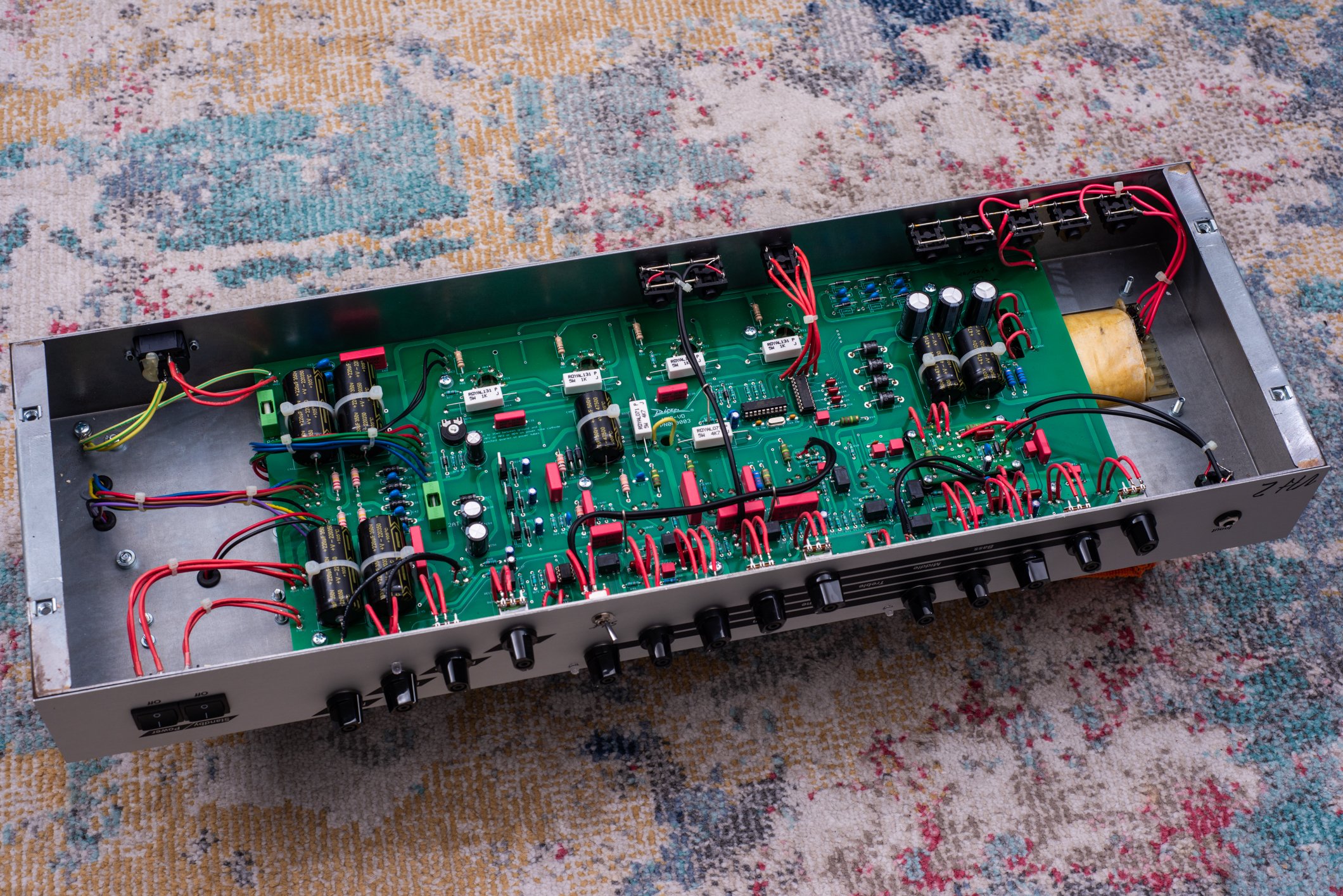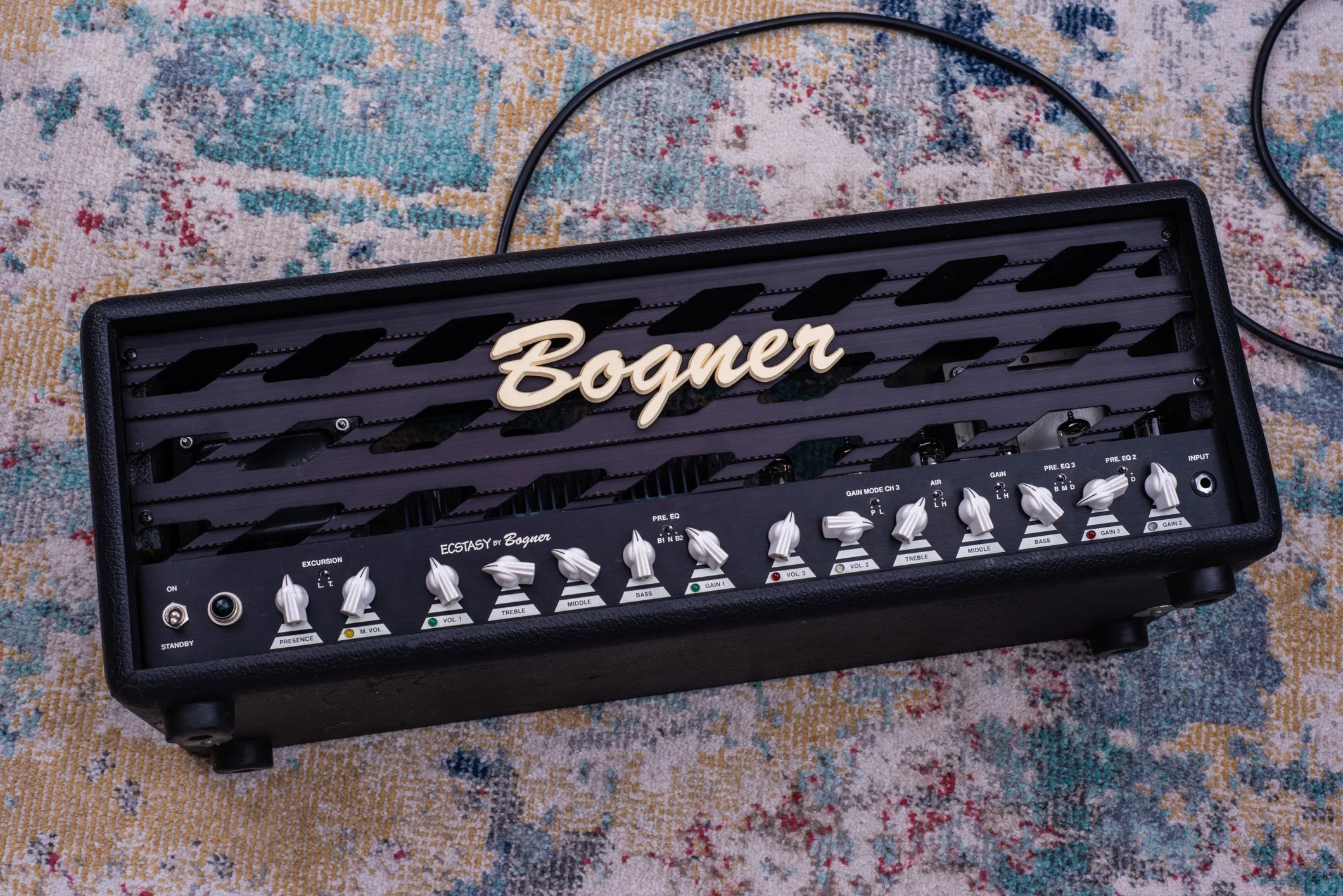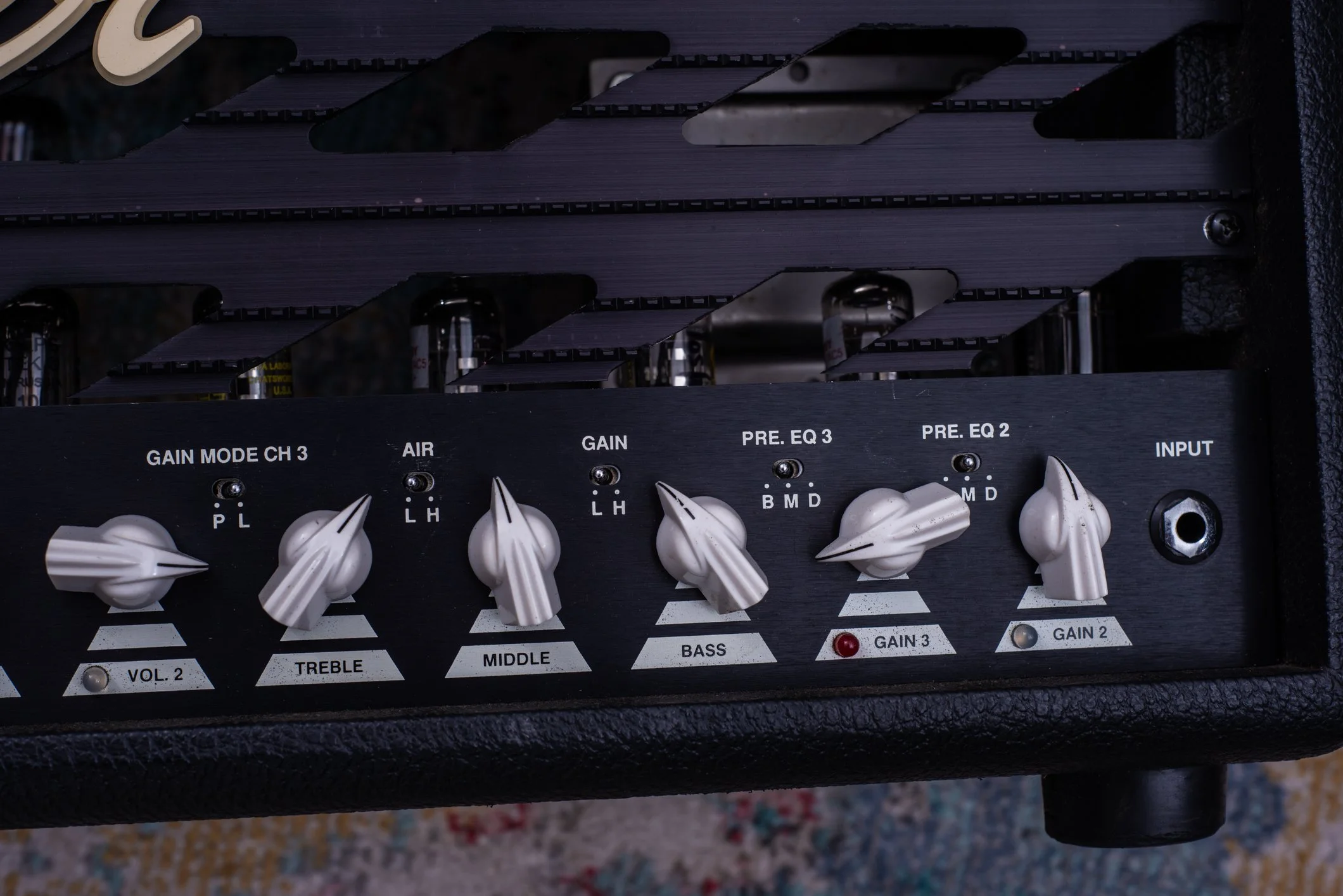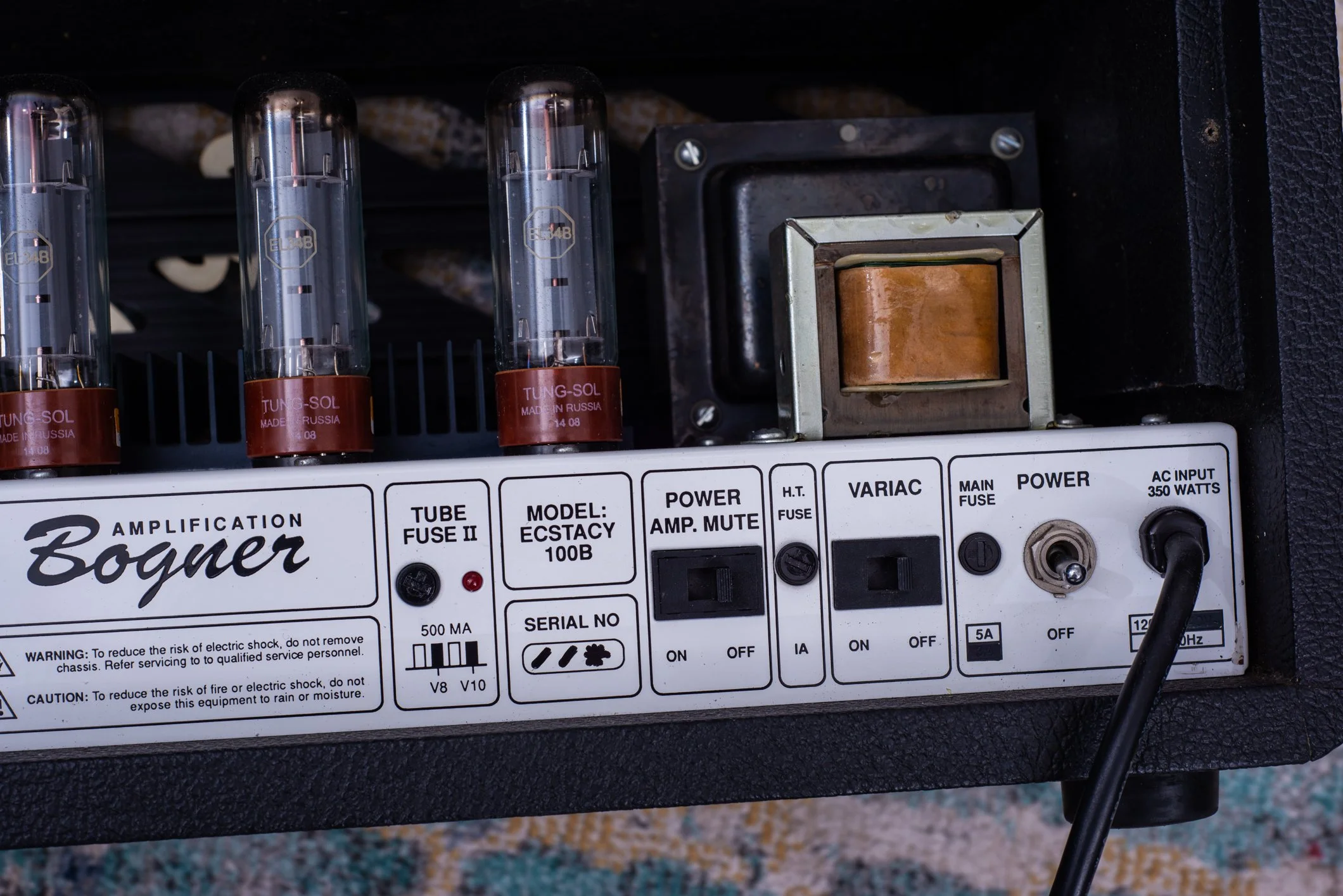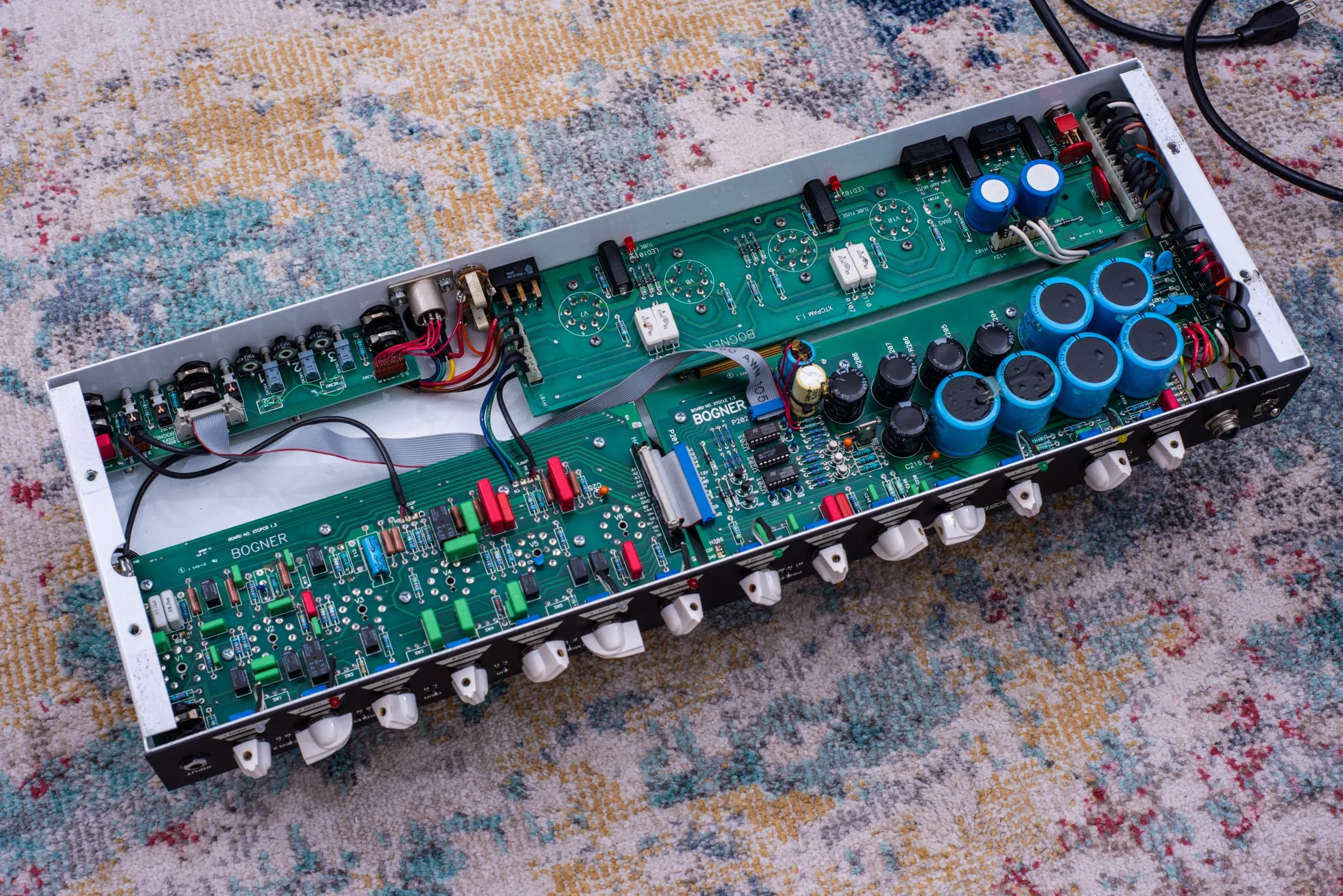I’ve been watching this amp sit at a local shop for a while - one I’ve talked about before, and funnily enough, the same place I got my Diezel Einstein last year: Jimmy’s Vintage Music. If you are ever in the Tampa or Central Florida areas, I’d HIGHLY encourage you to go check out this shop. It’s run by one guy - Jimmy of course - and he maintains one of the best high end vintage guitar stores I’ve ever seen. I feel lucky to live close enough that I can make it out there occasionally, and now that he updates the site pretty often with new gear, it’s really convenient (I remember when he used to list occasional things on craigslist but you never really knew what he had in stock back then!).
Anyway, he’s had this VH2 for a little while. It’s an amp on my list, but I always figured I’d eventually get my hands on a VH4 someday so it was never a huge priority, especially for the prices I was seeing them for elsewhere online. After seeing the price drop on this one locally though, I had to jump on it, so I drove down there last week with a pair of Ibanezes as potential trades. I ended up keeping the guitars… no problem there, and I suspect Jimmy’s clientele are more into the classic Fender/Gibson type stuff. I have to mention that Jimmy is a really great guy to deal with - he was honest about what he could and couldn’t take in trade based on his regulars, and still gave me a really fair price on the amp to buy it outright. Let me put it this way, I’ve been there many times, and I’ve always left very happy.
No surprise, the amp is in pristine shape - original footswitch included. These have only been out for a few years, and this one is quite recent by my standards as a 2021 model. This is a two channel amp designed for a little more mass appeal, sort of your entry point into the Diezel sound for the low low price of $3000 brand new. A quick overview of the model lineup at the time of writing: The VH2 is the least expensive model in the lineup of “full size” heads, alongside the Hagen, Herbert, and VH4, all of which are $4000+. There is also a line of smaller form factor heads - but unlike other manufacturers, the smaller heads are still beasts, with the VHX and D-Moll sporting 100w power sections. The other “small” heads are the 45w Paul and BigMax (with the BigMax being the least expensive in that form factor at $2500 with only a single channel).
In short, if you want to get into the Diezel sound, the VH2 is the go-to amp for a lot of people just based on price and features alone. The VH2’s Channel 1 is based on the Paul’s clean channel, which is well regarded for a high gain amp. The real highlight though, and I suspect the main reason most are interested in this amp, the VH2’s Channel 2 is supposedly the same as the VH4’s famous Channel 3.
I’m not as familiar with the buzz around this myself - I’ve listened to some Tool, like a few tracks, but it’s not the tone I dream about late at night (that’s not to say it isn’t good of course). I also know Smashing Pumpkins and Billy Corgan are big users of the VH4 in general, channel 3 included. I wouldn’t dare call it “overhyped,” but there is definitely a subset of guitarists who are a bit fanatical in their appreciation of the VH4 Channel 3’s sound and whoever uses it.
Okay, hype aside how does it sound? Well, I haven’t played a VH4 yet so I really can’t compare to that yet. I will say it’s a chunky sounding amp, but much brighter than the Herbert Mk1 when I A/B tested them. It also has far less gain than I expected, and a little less low-mid gut punch. I think I had in my mind it was going to be a heavy metal amp, and it can be, but it’s certainly less saturated than the Herbert for example, and it doesn’t get as gainy as my Einstein either. Of course, boosting with a tubescreamer sounds great, a la single channel JCM800, but this is no Marshall clone by any stretch. It’s hard to say really, because I need to spend a little more time with it to really feel out what it can do. It didn’t blow my socks off immediately like I felt the first time I played a Herbert, but I think a lot of that is just my approach to a new amp, where I crank the gain and rip out some heavy riffs. That’s not to say it isn’t an excellent amp for heavier tones, I think I just need to coax it a little bit more and admittedly I’ve been busy, so I’m only a few hours into spending time with it as I write this. It does get a little undefined with the gain too high, so that’s kind of limiting - in order to keep some clarity, I have the gain at about 1-2 O’clock, but that’s not enough saturation for my liking.
As for the clean channel, it’s an acceptable clean channel but it definitely doesn’t wow me. It’s very flat, and probably great for effects or with an EQ to shape your sound to what you want, but on its own it’s a bit plain. It does sound really good with the gain cranked up as a pseudo-crunch channel though, with very natural feel to the overdrive.
Construction, fit and finish, and quality are all absolutely top tier and it shows. The preamp tubes are PCB mounted but that never bothered me, but I know some feel differently especially in this price range. It has absolutely massive transformers, and my understanding is that these are the same ones as the full size VH4. Of course, it still has me thinking about the VH4 and wondering what I can get out of that amp’s Ch2 and Ch4… I guess that’s the point.

